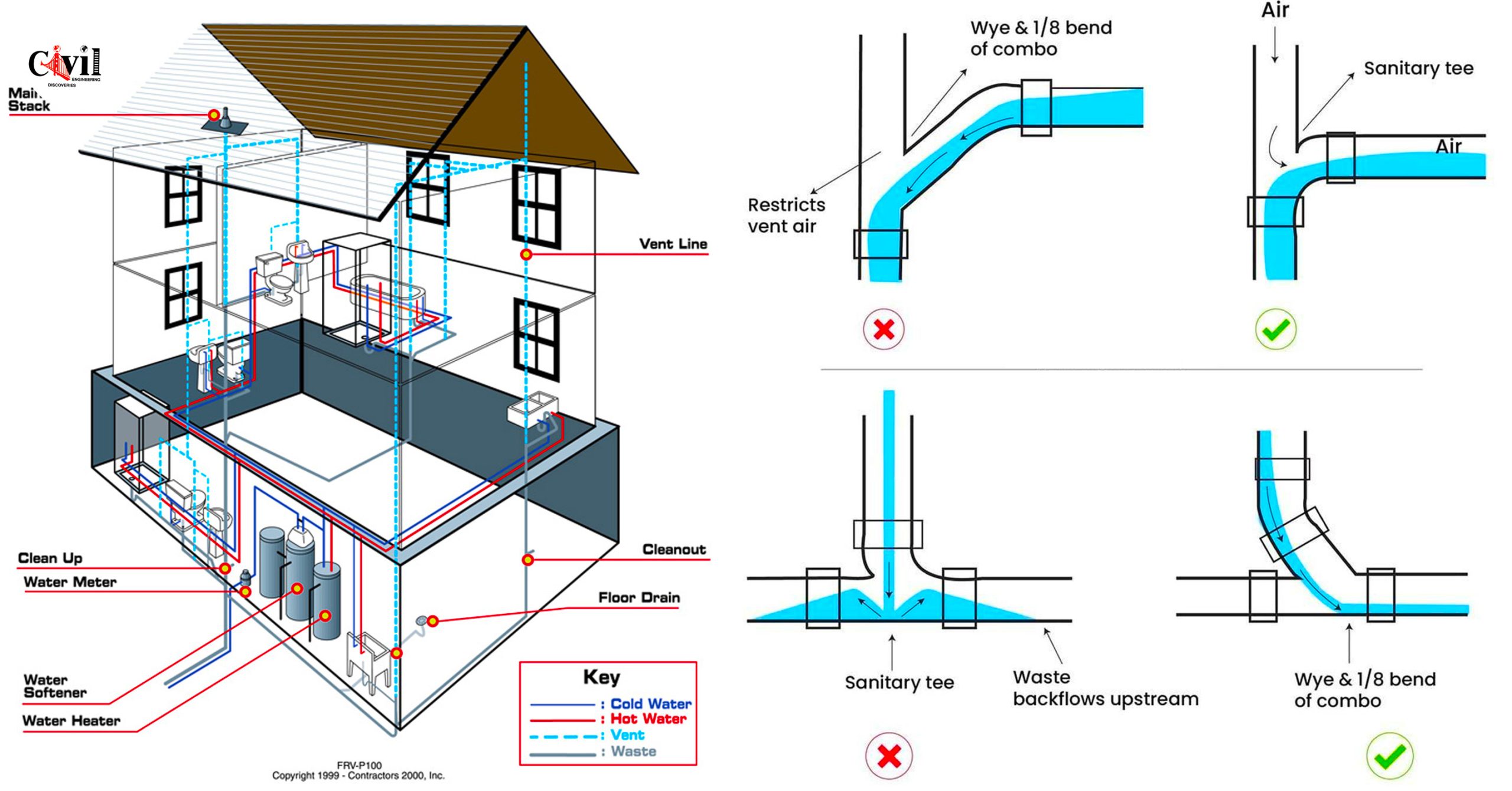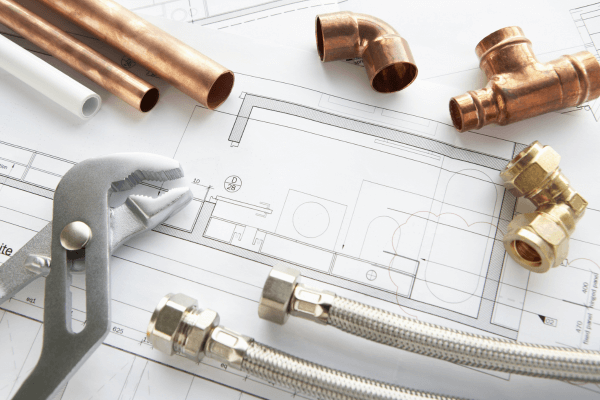Key Components of Your House's Plumbing System
Key Components of Your House's Plumbing System
Blog Article
How do you feel when it comes to Exploring Your Homes Plumbing Anatomy?

Recognizing how your home's pipes system functions is crucial for every house owner. From delivering clean water for alcohol consumption, cooking, and bathing to securely removing wastewater, a well-kept plumbing system is important for your household's wellness and comfort. In this detailed guide, we'll discover the intricate network that comprises your home's pipes and deal tips on maintenance, upgrades, and managing usual issues.
Introduction
Your home's plumbing system is greater than simply a network of pipes; it's a complex system that ensures you have accessibility to tidy water and efficient wastewater removal. Recognizing its components and exactly how they collaborate can aid you protect against costly repair work and make sure every little thing runs efficiently.
Fundamental Elements of a Pipes System
Pipes and Tubing
At the heart of your pipes system are the pipes and tubing that carry water throughout your home. These can be made from different products such as copper, PVC, or PEX, each with its benefits in regards to longevity and cost-effectiveness.
Components: Sinks, Toilets, Showers, and so on.
Fixtures like sinks, toilets, showers, and bathtubs are where water is used in your home. Comprehending exactly how these fixtures link to the plumbing system assists in identifying problems and planning upgrades.
Shutoffs and Shut-off Factors
Shutoffs manage the flow of water in your pipes system. Shut-off shutoffs are important during emergencies or when you require to make repair services, enabling you to isolate parts of the system without interfering with water circulation to the entire house.
Water Supply System
Key Water Line
The primary water line connects your home to the metropolitan water or a personal well. It's where water enters your home and is distributed to numerous fixtures.
Water Meter and Stress Regulatory Authority
The water meter actions your water use, while a pressure regulator ensures that water flows at a secure stress throughout your home's pipes system, avoiding damage to pipes and components.
Cold Water vs. Warm water Lines
Comprehending the distinction between cold water lines, which provide water straight from the primary, and hot water lines, which lug warmed water from the water heater, helps in troubleshooting and preparing for upgrades.
Drain System
Drain Pipes and Traps
Drain pipelines lug wastewater far from sinks, showers, and bathrooms to the sewer or septic system. Catches avoid sewage system gases from entering your home and likewise trap particles that might cause obstructions.
Air flow Pipes
Air flow pipelines allow air right into the drainage system, protecting against suction that might slow down drainage and cause traps to empty. Correct air flow is crucial for preserving the integrity of your pipes system.
Value of Appropriate Drainage
Guaranteeing proper drain prevents back-ups and water damages. Frequently cleansing drains and maintaining catches can stop pricey repair services and expand the life of your plumbing system.
Water Heater
Sorts Of Hot Water Heater
Water heaters can be tankless or conventional tank-style. Tankless heating systems heat water as needed, while tanks save heated water for instant usage.
Updating Your Plumbing System
Reasons for Updating
Upgrading to water-efficient fixtures or changing old pipelines can improve water top quality, minimize water expenses, and raise the value of your home.
Modern Plumbing Technologies and Their Benefits
Explore technologies like wise leak detectors, water-saving bathrooms, and energy-efficient hot water heater that can conserve cash and minimize ecological influence.
Price Considerations and ROI
Determine the ahead of time costs versus long-lasting savings when thinking about pipes upgrades. Many upgrades spend for themselves with lowered utility expenses and fewer repairs.
Exactly How Water Heaters Link to the Pipes System
Comprehending exactly how water heaters attach to both the cold water supply and hot water distribution lines aids in detecting concerns like insufficient hot water or leaks.
Upkeep Tips for Water Heaters
Routinely purging your water heater to remove debris, checking the temperature level setups, and examining for leaks can expand its life-span and boost power effectiveness.
Typical Plumbing Issues
Leakages and Their Causes
Leakages can take place as a result of aging pipes, loose installations, or high water stress. Resolving leakages without delay protects against water damage and mold and mildew development.
Clogs and Obstructions
Obstructions in drains pipes and toilets are usually caused by purging non-flushable things or a buildup of oil and hair. Utilizing drain displays and bearing in mind what drops your drains can protect against blockages.
Indicators of Plumbing Troubles to Watch For
Low water stress, slow drains, foul odors, or uncommonly high water bills are signs of prospective plumbing troubles that must be dealt with promptly.
Plumbing Maintenance Tips
Normal Examinations and Checks
Schedule yearly pipes evaluations to capture problems early. Search for signs of leakages, corrosion, or mineral buildup in taps and showerheads.
DIY Upkeep Tasks
Basic tasks like cleansing faucet aerators, checking for commode leaks using dye tablet computers, or protecting exposed pipelines in cold environments can stop major pipes issues.
When to Call a Specialist Plumbing
Know when a pipes problem requires expert knowledge. Trying complex repair services without proper understanding can bring about more damage and greater repair expenses.
Tips for Reducing Water Usage
Simple routines like repairing leakages promptly, taking shorter showers, and running complete loads of washing and dishes can save water and reduced your utility costs.
Eco-Friendly Plumbing Options
Take into consideration lasting plumbing products like bamboo for flooring, which is durable and green, or recycled glass for counter tops.
Emergency Readiness
Steps to Take Throughout a Plumbing Emergency situation
Know where your shut-off valves lie and exactly how to turn off the water system in case of a burst pipeline or major leakage.
Importance of Having Emergency Situation Contacts Convenient
Maintain get in touch with information for regional plumbings or emergency solutions easily offered for quick action throughout a plumbing dilemma.
Ecological Influence and Conservation
Water-Saving Fixtures and Home Appliances
Mounting low-flow faucets, showerheads, and toilets can substantially lower water usage without sacrificing performance.
Do It Yourself Emergency Situation Fixes (When Applicable).
Short-term solutions like making use of duct tape to patch a leaking pipeline or positioning a pail under a dripping faucet can reduce damages up until a specialist plumber arrives.
Conclusion.
Comprehending the composition of your home's pipes system encourages you to keep it successfully, conserving money and time on fixings. By adhering to normal upkeep regimens and remaining educated concerning modern-day pipes modern technologies, you can guarantee your pipes system runs successfully for years to come.
Understanding Your Home Plumbing System: A Comprehensive Guide
Plumbing System: The Lifeline of Your Home
At its core, the plumbing system is designed to perform two primary functions: bring fresh water into your home and remove wastewater. The system is a network of pipes, fixtures, and other components that transport water and sewage. Residential plumbing systems include potable water supply lines, drain-waste-vent (DWV) systems, and various plumbing fixtures that make water use in daily tasks possible.
Key Components:
Water Supply: This part of your plumbing system brings municipal water into your home, passing through the main water supply line. It s responsible for supplying all water needs, from drinking to bathing.
Drainage System: It carries waste and water away from your home to the sewer or septic system. This system includes all the piping within your home that leads to external sewage or septic systems.
Vent System: An essential yet often overlooked component, the vent system allows sewer gases to escape and lets air into the drainpipes, ensuring water and waste move correctly through the system.
Fixture: More Than Just Taps and Toilets
Plumbing fixtures are the most interactive parts of the plumbing system, including faucets, showers, toilets, and sinks. Each fixture is connected to the plumbing system and plays a role in either the delivery of freshwater or the disposal of waste and wastewater.
Types of Fixtures:
Faucets and Sinks: Used for washing hands, dishes, and other daily water needs. Toilets: Dispose of human waste through the sewage system. Bathtubs and Showers: Provide bathing facilities, requiring both hot and cold water supply. Water Supply: The Source of Life
The water supply system is a critical component, ensuring that potable water is available throughout your home for various uses, including drinking, cooking, and cleaning. This system consists of pipes that distribute water to different parts of the house, controlled by valves to regulate the water flow.
Types of Plumbing: Materials and Methods
Various types of plumbing systems and materials are used in residential settings, each with its advantages and applications. From copper and PVC pipes for water supply to cast iron and ABS for drainage, the choice of materials can impact the longevity and efficiency of your plumbing system.
https://intownplumbingtx.com/articles/home-plumbing-system-guide/

Do you enjoy more info about Anatomy of a House: Understanding the Components? Write feedback down the page. We'd be glad to know your feelings about this blog posting. We are looking forward that you visit us again later on. Sharing is nice. Helping people is fun. I love your readership.
Browse Website Report this page